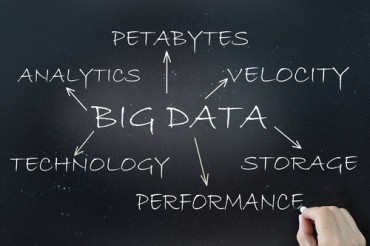
IoT will have an immense impact in the world of healthcare. What are some of the best use cases today of this technology to help patients and doctors?
The intersection of the Internet of Things (IoT) and Healthcare may represent the best example of how technology – when deployed properly – can a make a revolutionary impact on the human experience. Telemedicine devices vastly improve the speed and effectiveness of care to patients with mobility challenges, the elderly, and those in remote locations.
IoT telemedicine solutions can be delivered across a number of different devices, each with their own benefits, challenges, and solutions. For example, self-administered drug delivery options paired with smartphone apps can quickly and accurately transmit patient data to physicians and give patients real-time information on their conditions. The use of tablets, Personal Emergency Response Systems (PERS), and remote kiosks are increasingly popular for helping to facilitate effective, connected patient care.
See also: 5 ways IoT is reshaping healthcare
While there has been increased IoT adoption in the Healthcare industry in recent years, many organizations still struggle to get from inception to implementation. While the ability to launch IoT applications has become considerably easier, it is still an often-difficult journey to navigate.
Optimizing for connected healthcare
Organizations looking to create IoT-powered healthcare applications must consider a number of critical elements when designing, launching or updating:
- Connectivity – Understanding the best connectivity option depends on the application. Is it a low-power implementation simply collecting data or a richer deployment requiring video or live-streaming? In which geographies or regions will the application exist? There are a number of current and emerging network technologies, as well as a number of carrier options – it is really all about understanding what is necessary to accomplish the goals of the application and secure ROI.
- Platform – For applications in use over several different devices, the ability to manage and have visibility to all of them is key. Device management allows you to collect data about their use and how they are functioning, but can also help troubleshoot issues, such as lost or misused devices. This is especially important considering they may contain HIPAA-compliant patient information.
- Devices and solutions – This is one of the most complex aspects Healthcare organizations must address when implementing IoT solutions. There are a number of off-the-shelf hardware options available to providers, and some may even choose to build their own devices from scratch. From there, companies must ensure their selected devices are integrated with the correct networks, applications, and security configurations for the complete solution to launch.
- Device certification – Healthcare IoT devices, such as those used in PERS solutions, require multiple levels of certification based on geography and the type of technology being used before it can connect to any network. For most, this requires the assistance of a third-party expert to help navigate the myriad regulations that may apply.
- Support – For most Healthcare organizations, building an IoT solution from the ground up is not an option, which means the addition of experts who can help troubleshoot problems at a moment’s notice is not possible. Given the important – and sometimes life and death – nature of Healthcare IoT applications, it is critical to consider the need of IoT service providers who can quickly address any issue.
Some use-case examples
Tablets
End-to-end managed tablet solutions enable home Healthcare professionals to quickly access patient data to more efficiently deliver services outside of the doctor’s office. Tablets overcome significant mobility challenges through their versatility, portability, and network flexibility. Enabling tablets with secure, cellular connectivity eliminates the concerns associated with WiFi availability or security, and also provides GPS tracking capabilities – useful if the device is lost or stolen.
Tablets offer a single‐point experience for Healthcare professionals and can be restricted to a very narrow application area for the intended use of the device. This allows for careful and intentional provisioning of permissions for specific applications.
PERS
Personal Emergency Response System (PERS) solutions help families and professional caregivers provide better care and ensure long-term health and safety for seniors. These wearable, IoT-enabled devices are literal lifesavers, bringing aid with just the push of a button. In the past, PERS were predominantly used to track wandering Alzheimer’s or dementia patients as a safeguard to reduce accidents. Now, PERS serve many additional roles including “age in-place” enablement. PERS continue to experience widespread deployments, providing independent older adults with access to emergency help or on-demand care regardless of location.
Uninterrupted cellular network connectivity is a critical component in ensuring reliable PERS solutions. Whether in the home or at the grocery store, dependable cellular network connectivity ensures that seniors can immediately alert caregivers and dispatch emergency first-responders.
Connected Kiosks
Healthcare kiosks are another way that patients are able to receive rapid diagnosis and care without an appointment. Self-service is a trend in almost every industry, and Healthcare is no exception. One example includes connected blood pressure stations. Often seen at grocery stores and pharmacies, these kiosks allow patients to share readings with their physicians. Automated medication dispensaries are also becoming more common, providing patients with the freedom to pick up prescriptions from an ATM-style machine, assisted by live, two-way video chat with a pharmacist. Automated kiosks not only offer a greater level of control and convenience to patients, they also help streamline costs for Healthcare organizations.
IoT applications are unlocking the ability for patients to put care in their own hands while providing measurable ROI for Healthcare organizations and medical device manufacturers. Consider the guidelines addressed here to more quickly and effectively bring healthcare IoT applications to market, while meeting your business requirements.




























